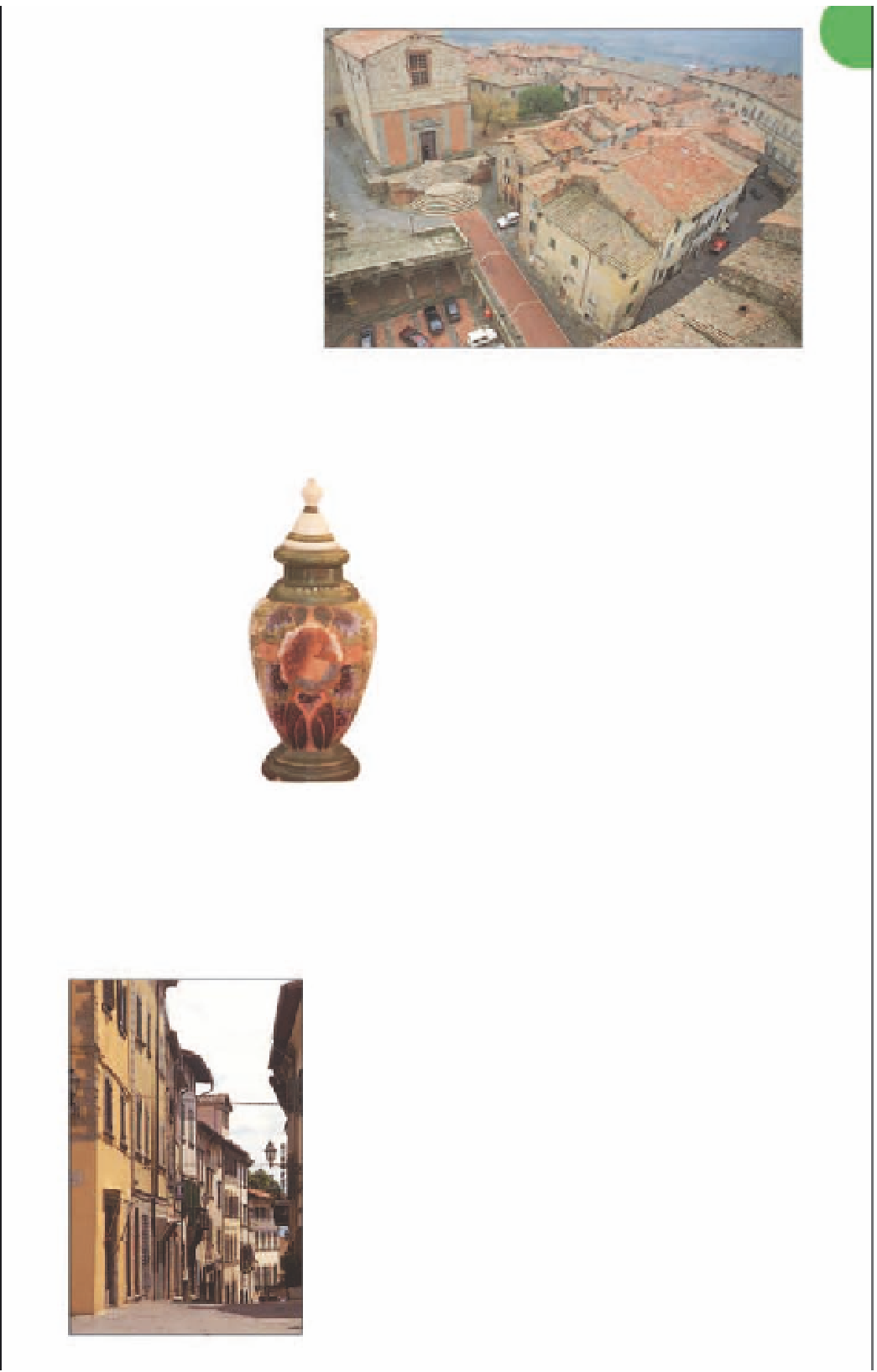Travel Reference
In-Depth Information
Monte San
Savino
t
Road map
E3.
*
7,794.
V
@
n
Piazza Gamurrini 3 (0575
817 71).
(
Wed.
The town stands on the
western edge of the Valdi-
chiana, once a marshy and
malaria-ridden plain that was
drained by Cosimo I in the
16th century. It is now an area
of rich farmland used to rear
cattle whose meat is used for
Bistecca alla Fiorentina
, the
famous beefsteaks served in
Florentine restaurants
(p267)
.
Agriculture has made the
town prosperous, and its
streets are lined with hand-
some buildings and churches.
Some of these are by the
High Renaissance sculptor
and architect Andrea
Contucci, known as
Sansovino (1460-1529),
who was born in the
town; a number are
by Antonio da
Sangallo the Elder
(1455-1537), his
contemporary.
The town's main
street, Corso Sangallo,
starts at the Porta
Fiorentina town gate,
built in 1550 to Giorgio
Vasari's design. The
street leads past the
14th-century Cassero,
or Citadel, whose exterior
walls are now almost entirely
hidden by 17th-century houses.
There are good views from
the interior, which contains
the tourist office and the small
Lucignano, with its circular street plan
Museo del Cassero
with its
extensive collection of local
work. Further up the street
is the handsome Classical
Loggia dei Mercanti
(1518-20), designed by
Sansovino, and the Palazzo
Comunale, originally
built as the Palazzo di
Monte by Sangallo for
Cardinal Antonio di
Monte in 1515. San-
sovino's house can be
seen in the Piazza di
Monte. He laid out
the square, built the
fine double loggia with
Ionic columns that
fronts
Sant'Agostino
church and went on to
design the cloister
standing alongside it.
Inside the church is
a series of 15th-century
frescoes illustrating scenes
from
The Life of Christ
, and
Vasari's
Assumption
altarpiece
(1539). Sansovino's worn
tomb slab lies beneath
the pulpit.
E
hill upon which the town sits,
sheltered by its ancient walls.
There are four small piazzas
at the centre.
The
Collegiata
is fronted
by some attractive steps
whose circular shape reflects
the town's street plan.
Completed by Orazio Porta
in 1594, the church contains
some fine gilded wooden
angels added in 1706.
The 14th-century Palazzo
Comunale houses the
Museo
Comunale
. Its highlight is a
massive gold reliquary, 2.5 m
(8 ft) high, to which numerous
artists contributed over the
period 1350-1471. Because
of its shape, it is known as
the
Tree of Lucignano
.
Also of note are two 14th-
century paintings by Luca
Signorelli: a lunette showing
St Francis of Assisi miraculously
receiving the wounds of
Christ to his hands and feet,
and a
Madonna and Child
.
There are several fine 13th- to
15th-century Siena School
paintings and a small painting
of the Madonna by Lippo
Vanni (1341-75).
The vaulted ceiling of the
main chamber, the Sala del
Tribunale, has frescoes of
famous biblical figures and
characters from Classical
mythology painted from
1438-65 by various Siena
School artists.
R
Locally made
vase, Museo di
Ceramica
Museo del Cassero
Piazza Gamurrini
.
Tel
0575 817 71.
#
by appt.
&
R
Sant'Agostino
Piazza di Monte
.
#
daily.
7
Lucignano
y
Road map
E3
.
*
3,349.
@
n
Piazza del Tribunale 22 (0575
838 01).
(
Thu.
Collegiata
Costa San Michele
.
Tel
0575 83 61 22.
E
Museo Comunale
Piazza del Tribunale 22
.
Tel
0575 83
80 01.
An attractive medieval
town, Lucignano contains
many well-preserved 14th-
century houses. The street
plan is extremely unusual,
consisting of a series of four
concentric rings encircling the
10am-1pm, 3-6pm Tue,
Thu-Sun; by appt Wed (winter:
open only Sat & Sun).
#
Corso Sangallo in Monte
San Savino
&
7






































